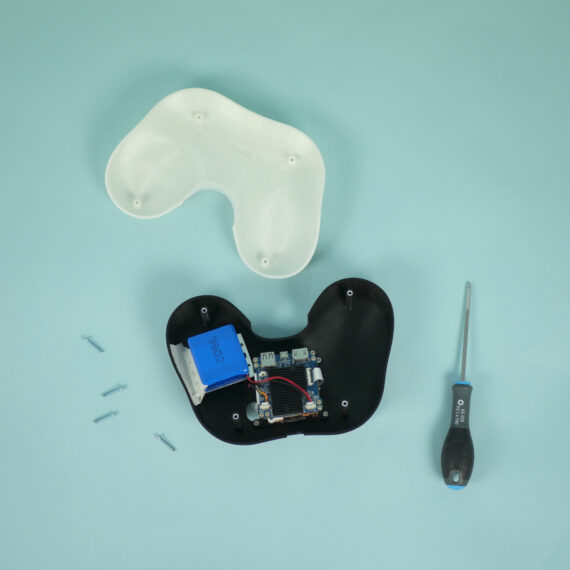06 Sep AM Maker
AM Strategy guide
- Cases
In the following section we present a summary of cases developed in the AM Maker course in 2022. You can read more about the strategy guide for additive manufacturing by clicking the link below.
Each of the cases below has been worked conceptually through four different complexity lenses: systems, digital, material and sustainability. It was worked on in workshops and developed technically in a five week period. Each case is presented with a description of the business or entrepreneur, followed by the challenge to be tackled, the tools used to exploit complexity freedom and the final result.
UVision
UVision is a camera based sensor for underwater robots created by Morten Beier, an engineer and underwater photographer with a recent MA in Robotics. His motivation for working with Additive Manufacturing is achieving a beautiful, unique, and functional design for a purely technical product that has to withstand high underwater pressures. Additionally it is their objective to enhance the sustainability footprint of the product to create a future led business.
The challenge for Uvision was to map the landscape of possible designs that the product could become with different architectures. Through the exploration of different configurations it became possible to propose scenarios where the same technology could be included in different product categories. The final result shows that Uvision has the opportunity to compete in submarine drones, submarine add-on sensors, and diver equipment.
Tools used
- Functional Architectures
- Genetic Algorithms
Lili Lamps
Lili Lamps makes 3D printed lamps. The business vision is to offer more products when the momentum is there by using distributed production. The technology that Additive Manufacturing offers has opened up possibilities and advantages that exist in their product distribution. Their distributed manufacturing model is in itself a sustainable one since it saves resources usually spilled in transport. Therefore, the strategic position of the company has 3D printing at the core.
The objective of Lily Lamps’ exercise was to expand its additive manufacturing knowledge base and experiment with alternative product configurations. The final configurations explored the elastic properties of 3D printed plastic to deliver products that are more complex and larger in size.
Tools used:
- Effectual networks
- Functional surfaces
- Compliant mechanisms
Manyone
Manyone is a design consulting firm that combines the best in creative thinking, strategy, and technology. They are organized as teams of teams working from several offices across Asia, Europe and the Americas.
At Maker they are designing an AR projector. It is an interactive, handheld device that through projection enables a new type of augmented reality experience centered around play, exploration, creation and sharing. This also includes an open design and manufacturing strategy where users have the space to alter the product and produce it locally using digital fabrication.
Manyone participated in this course with the objective of expanding the potential of the open source strategy. The main challenge was to frame the project in a way that could take advantage of 3D printing beyond distributed manufacturing and produce a more integrated product. The results of this experiment propose a printable body that facilitates assembly and optimizes print time.
Tools used:
- The territory
- Functional surfaces
91 - 92
Ninetyoneninetytwo is a sustainable design and 3D printing company based in Copenhagen. 91-92 has developed a series of lamps, home accessories and furniture. Additive manufacturing gives them a big freedom to explore their design language and the use of recycled plastic.
The exploration of materiality became the focus of 91-92 in the exercise of this course. Fused filament 3D printing is known to trade off complexity freedom for manufacturing time. Therefore more complex textures bring more printing time which impacts manufacturing competitiveness. The results of the exercise substituted extruder movement for extrusion speed to create textures that otherwise would require extra printer movements. These results allow the fabrication of bodies with texture with the same printing speed as untextured ones
Tools used:
- Minimal units
- Flow and temperature
AM Maker tools
Read more about the tools used by the companies and other types of tools that can be used, when making Additive Manufacturing, in the PDF below.















